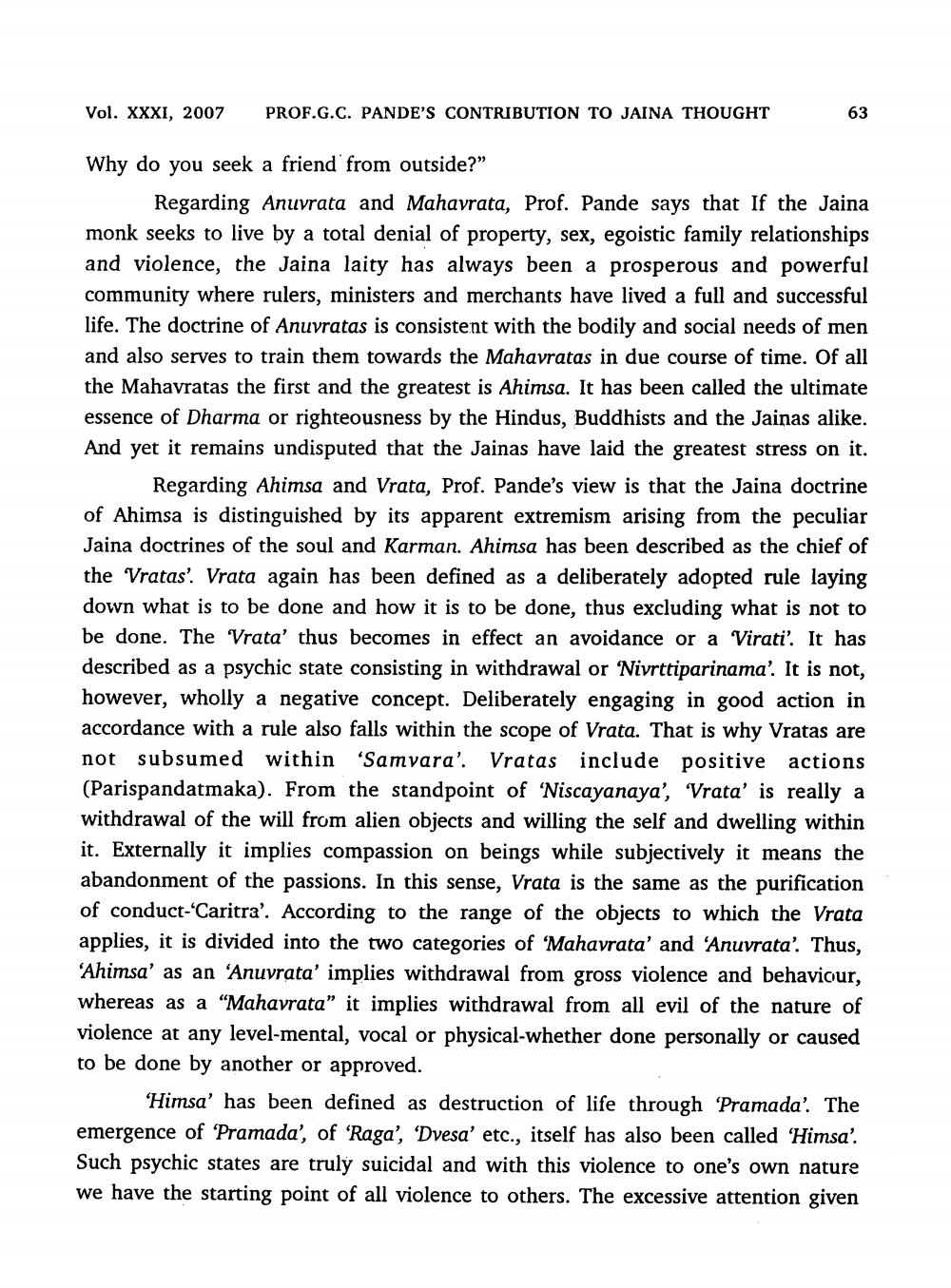________________
Vol. XXXI, 2007
PROF.G.C. PANDE'S CONTRIBUTION TO JAINA THOUGHT
-
63
Why do you seek a friend from outside?”
Regarding Anuvrata and Mahavrata, Prof. Pande says that If the Jaina monk seeks to live by a total denial of property, sex, egoistic family relationships and violence, the Jaina laity has always been a prosperous and powerful community where rulers, ministers and merchants have lived a full and successful life. The doctrine of Anuvratas is consistent with the bodily and social needs of men and also serves to train them towards the Mahavratas in due course of time. Of all the Mahavratas the first and the greatest is Ahimsa. It has been called the ultimate essence of Dharma or righteousness by the Hindus, Buddhists and the Jainas alike. And yet it remains undisputed that the Jainas have laid the greatest stress on it.
Regarding Ahimsa and Vrata, Prof. Pande's view is that the Jaina doctrine of Ahimsa is distinguished by its apparent extremism arising from the peculiar Jaina doctrines of the soul and Karman. Ahimsa has been described as the chief of the Vratas? Vrata again has been defined as a deliberately adopted rule laying down what is to be done and how it is to be done, thus excluding what is not to be done. The Vrata' thus becomes in effect an avoidance or a Virati'. It has described as a psychic state consisting in withdrawal or 'Nivrttiparinama'. It is not, however, wholly a negative concept. Deliberately engaging in good action in accordance with a rule also falls within the scope of Vrata. That is why Vratas are not subsumed within “Samvara'. Vratas include positive actions (Parispandatmaka). From the standpoint of 'Niscayanaya', Vrata' is really a withdrawal of the will from alien objects and willing the self and dwelling within it. Externally it implies compassion on beings while subjectively it means the abandonment of the passions. In this sense, Vrata is the same as the purification of conduct-Caritra'. According to the range of the objects to which the Vrata applies, it is divided into the two categories of Mahavrata' and 'Anuvrata'. Thus, 'Ahimsa' as an 'Anuvrata' implies withdrawal from gross violence and behaviour, whereas as a “Mahavrata" it implies withdrawal from all evil of the nature of violence at any level-mental, vocal or physical-whether done personally or caused to be done by another or approved.
'Himsa' has been defined as destruction of life through 'Pramada'. The emergence of 'Pramada', of 'Raga', 'Dvesa' etc., itself has also been called 'Himsa'. Such psychic states are truly suicidal and with this violence to one's own nature we have the starting point of all violence to others. The excessive attention given




